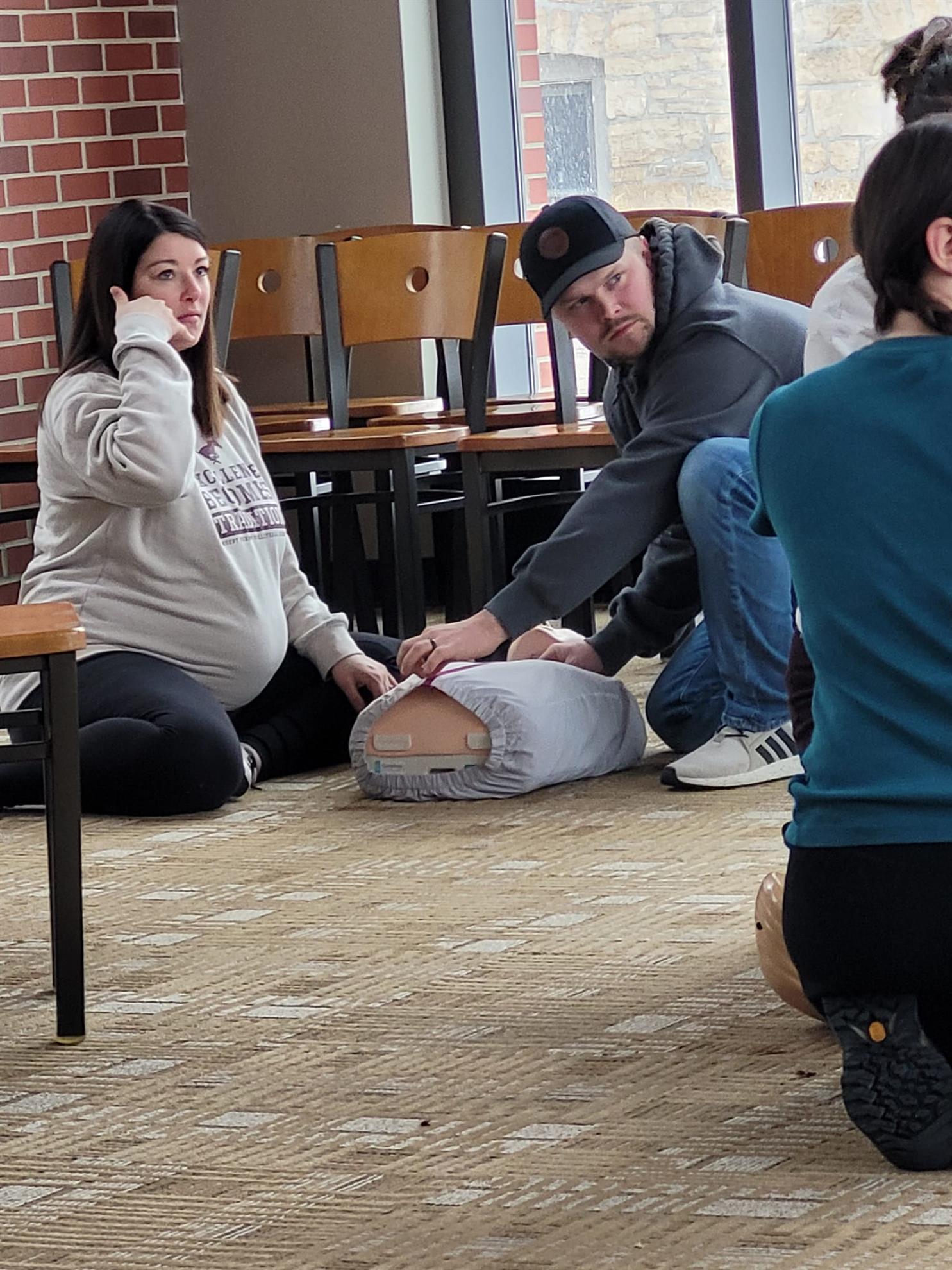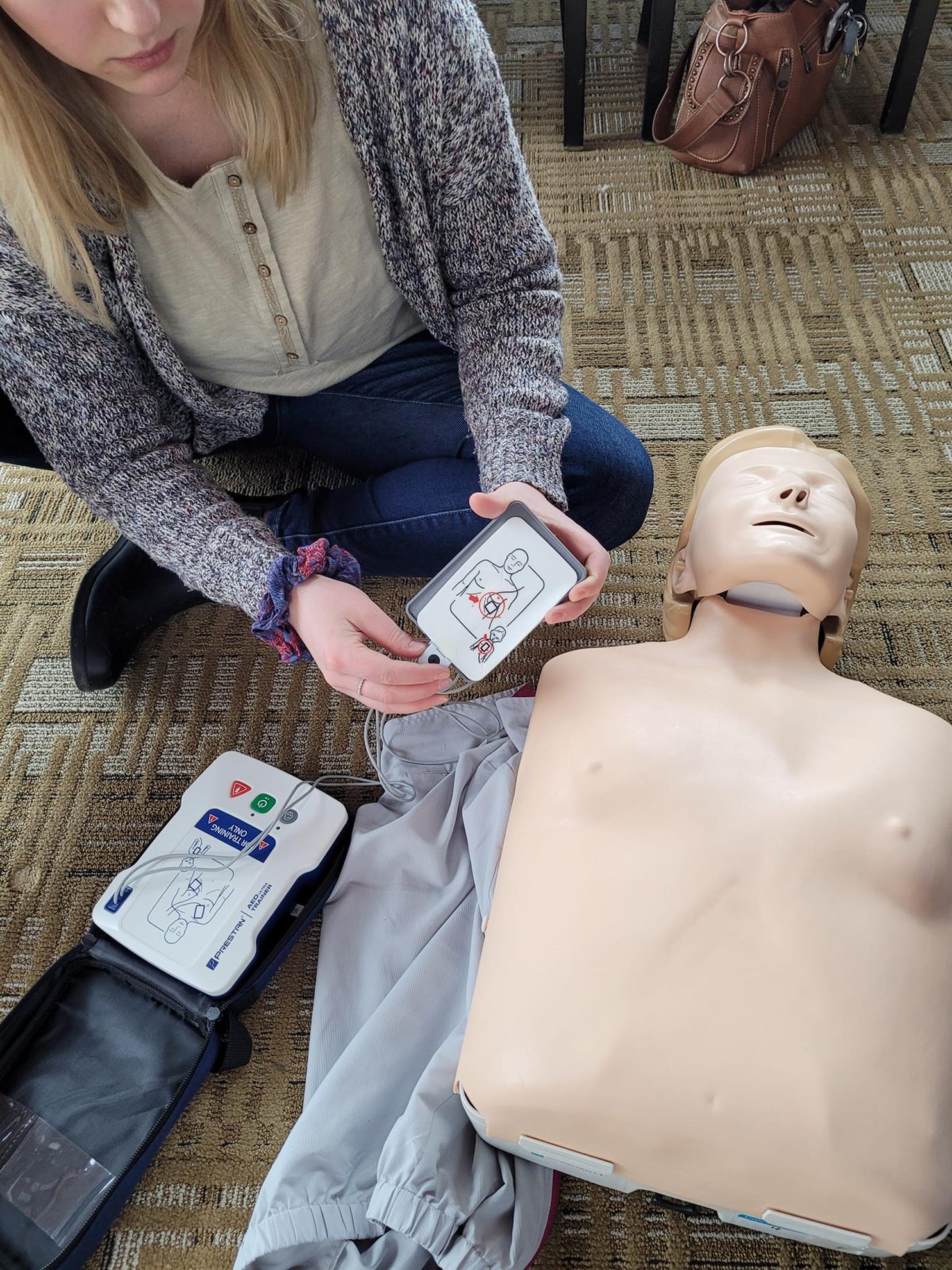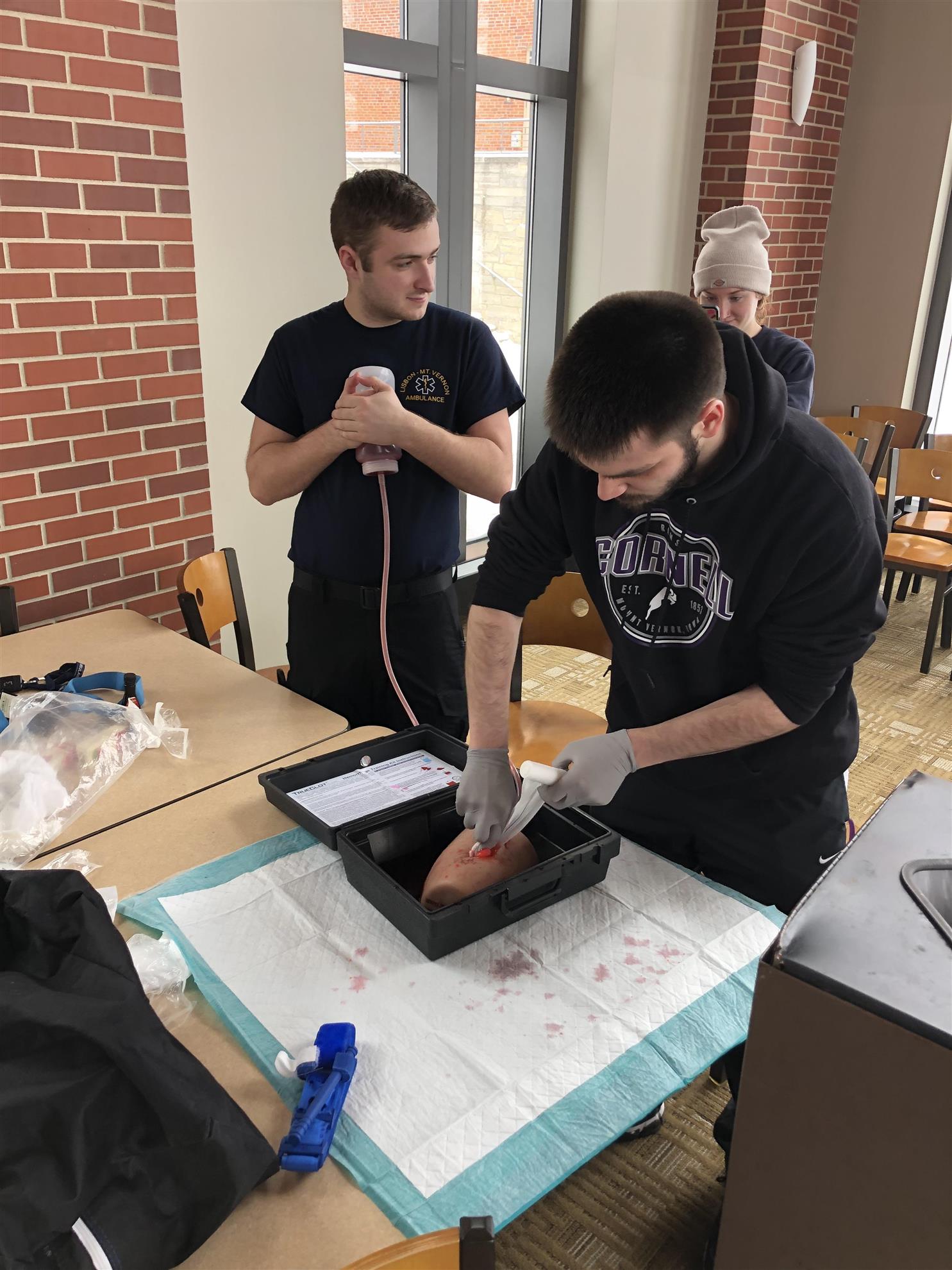 By now, you know why paramedics urge you to be proficient in bystander CPR. You can triple the odds of a positive outcome in the event of a cardiac arrest
By now, you know why paramedics urge you to be proficient in bystander CPR. You can triple the odds of a positive outcome in the event of a cardiac arrestAt our recent Rotary-organized Community CPR Class at Cornell College, 26 people got trained in CPR by the LMV Ambulance Service. Our program has trained over 200 people in the last six years between Mount Vernon and Marion classes.
I asked three people at the Cornell class why they came. Here’s what they said.
Young mom of a 7-month-old baby: Kids less than one have a very tiny airway in their throat. It doesn’t take much to clog that airway, and that’s why you hear often about babies choking. This mom came specifically to learn about infants, how to handle a chocking incident, and how to perform infant CPR. She was very happy with the training she got from the Ambulance Service trainers.
Infant CPR can be performed using two fingers in the center of the chest, pushing down at 100-120 compressions per minutes to a depth of 1.5-2 inches. For a chocking baby, hold them in your lap and gently roll them over to their stomach over your leg, hold their head steady, and hit them on the back hard enough to dislodge the obstruction in their throat. Of course, call 911 immediately.
Middle-aged man: this gentleman has recently taken a job as a high school golf coach. Coaches in Iowa are required to be certified by the AHA in CPR. So, our class came at a perfect time for him.
About half of the class at Cornell wanted the certification, which involves a little more training, particularly in CPR breathing technique. You tilt the victim’s head back slightly, plug their nose, and gently blow in their mouth until you see their chest rise. While breathing can be important for the victim, it’s less important than doing chest compressions and knowing how to use an AED. Chest compressions are KING, said the trainers repeatedly.
Middle-aged woman and her teenage son: this woman is a long-time nurse who has CPR skills from a few years back. She needed to upgrade her proficiency. She also wanted her son to be CPR proficient, and he had never been trained before. So, this was their chance to do it together.
The Ambulance Service trainers also led a Stop The Bleed class after the CPR class. Bystander Stop the Bleed has become a bigger issue in the last few years as it has been shown that the leading cause of death in people 10-44 years old is bleeding to death - gunshot, car accident, home and workplace accidents, and others. If more people knew Stop The Bleed, some of these horrific mass shooting incidents might be less lethal.
The three main techniques taught in STB are direct pressure over a pulsing wound, tourniquet use, and packing a seeping wound with gauze.
As for tourniquets, it’s best to use a high-quality commercial tourniquet you often will get in a STB first aid kit. There are some low quality tourniquets you might find for $10-$15, but they just don’t work. A quality tourniquet will cost $30 or more. Don’t waste your money on anything cheaper.
Some people now advocate for STB kits to be kept in public places right next to the AED (defibrillator) devices.
One other thing about tourniquets: makeshift tourniquets using belts or rag strips don’t work, either. They can’t deliver enough pressure to stop the bleed. Direct pressure to a bleeding wound is always more effective than a makeshift tourniquet. Call 911, apply direct and hard pressure to the wound, and wait for the professionals to arrive and take over.





